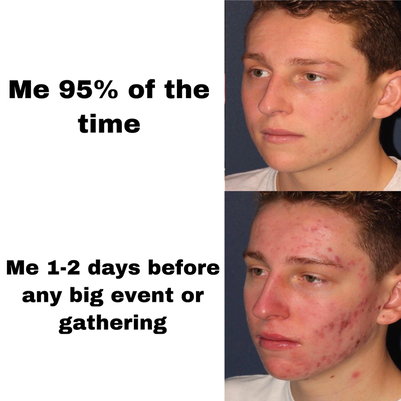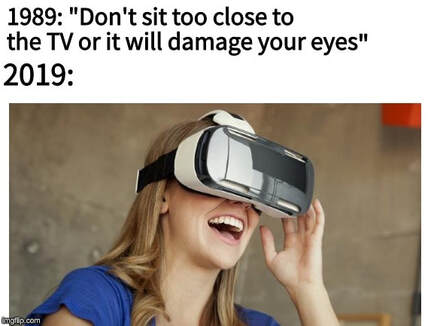TWENTY-SIXTH ISSUE
January 18, 2023
Efficacy and Safety of Lebrikizumab in Combination With Topical Corticosteroids in Adolescents and Adults With Moderate-to-Severe Atopic Dermatitis
JAMA Dermatology
JAMA Dermatology
An atopic dermatitis biologic that’s not dupilumab?!
Lebrikizumab (LEB) is a high-affinity monoclonal antibody to IL-13 that has recently demonstrated safety and efficacy as monotherapy for moderate-to-severe atopic dermatitis (AD) in a phase 2b and several phase 3 trials. It is well known that patients with AD are often treated in combination with topical corticosteroids (TCS), however, the safety and efficacy of LEB+TCS has not been evaluated. This phase 3, double-blind, placebo (PBO)-controlled trial of patients ages 12 and older randomized participants 2:1 to receive 16 weeks of treatment with either LEB+TCS or PBO+TCS. Primary outcomes included participants receiving Investigator Global Assessment (IGA) of 0 or 1 with 2 or more points of improvement from baseline and 75% improvement in the Eczema Area and Severity Index (EASI-75), while secondary endpoints evaluated itch, impact on sleep, and quality of life.
A total of 211 patients were included in this study (LEB+TCS, n=145; PBO + TCS, n=66), of whom 46 (21.8%) were adolescents. Among the LEB+TCS arm, IGA (0,1) was reached by 41.2% (vs. 22.1%, P = .01), and EASI-75 was reached by 69.5% (vs 42.2%, P < .001). There was also significant improvement among this cohort for all secondary end points. The most commonly reported adverse events (AEs) in the LEB+TCS group were conjunctivitis (7 [4.8%]), headache (7 [4.8%]), hypertension (4 [2.8%]), injection site reactions (4 [2.8%]), and herpes infection (5 [3.4%]) vs 1.5% or less in the PBO+TCS group.
Limitations: Limitations of this trial include its short duration and inability to quantify the amount of TCS used.
Main Takeaways: The combination of LEB + TCS may be a safe and effective treatment option for both adult and adolescent patients with AD.
Lebrikizumab (LEB) is a high-affinity monoclonal antibody to IL-13 that has recently demonstrated safety and efficacy as monotherapy for moderate-to-severe atopic dermatitis (AD) in a phase 2b and several phase 3 trials. It is well known that patients with AD are often treated in combination with topical corticosteroids (TCS), however, the safety and efficacy of LEB+TCS has not been evaluated. This phase 3, double-blind, placebo (PBO)-controlled trial of patients ages 12 and older randomized participants 2:1 to receive 16 weeks of treatment with either LEB+TCS or PBO+TCS. Primary outcomes included participants receiving Investigator Global Assessment (IGA) of 0 or 1 with 2 or more points of improvement from baseline and 75% improvement in the Eczema Area and Severity Index (EASI-75), while secondary endpoints evaluated itch, impact on sleep, and quality of life.
A total of 211 patients were included in this study (LEB+TCS, n=145; PBO + TCS, n=66), of whom 46 (21.8%) were adolescents. Among the LEB+TCS arm, IGA (0,1) was reached by 41.2% (vs. 22.1%, P = .01), and EASI-75 was reached by 69.5% (vs 42.2%, P < .001). There was also significant improvement among this cohort for all secondary end points. The most commonly reported adverse events (AEs) in the LEB+TCS group were conjunctivitis (7 [4.8%]), headache (7 [4.8%]), hypertension (4 [2.8%]), injection site reactions (4 [2.8%]), and herpes infection (5 [3.4%]) vs 1.5% or less in the PBO+TCS group.
Limitations: Limitations of this trial include its short duration and inability to quantify the amount of TCS used.
Main Takeaways: The combination of LEB + TCS may be a safe and effective treatment option for both adult and adolescent patients with AD.
Oral ritlecitinib demonstrates significant decreases in vitiligo severity scores compared to placebo
Journal of The American Academy of Dermatology
Journal of The American Academy of Dermatology
Treatment to make vitili-GO away!
Effective treatments options are limited for vitiligo, an autoimmune depigmenting skin condition. Vitiligo pathogenesis may involve CD8+ T-cell destruction of melanocytes via cytokines such as IFN-𝝲, IL-2, and IL-15, which are mediated by the JAK/STAT pathway. Researchers wanted to evaluate whether ritlecitinib, a JAK3 inhibitor, could effectively and safely treat vitiligo by blocking its theoretical pathogenesis.
In a phase 2b, placebo-controlled, double-blind, randomized study, 364 patients were randomized to one of the following groups: ritlecitinib loading dose of 200 mg or 100 mg daily for 4 weeks followed by 50 mg daily for 20 weeks (200/50 and 100/ 50 mg, respectively), no ritlecitinib loading dose with 50, 30, or 10 mg daily for 24 weeks, or placebo for 24 weeks. Patients were included who had a vitiligo diagnosis for at least 3 months with body surface area (BSA) involvement of 4-50%. The primary outcome was percent reduction from baseline in Total and Facial-Vitiligo Area Scoring Index (T-VASI and F-VASI) at week 24, scored by blinded observers.
Results showed a mean F-VASI percent decrease (90% CI) of -21.2 (-28.0, -14.4), -21.2 (-28.0, -14.3), -18.5 (-25.8, -11.2), -14.6 (-23.6, -5.6), -3.0 (-10.7, 4.7), and 2.1 (-4.6, 8.8) for the ritlecitinib 200/50 mg, 100/50 mg, 50 mg, 30 mg, 10 mg, and placebo groups, respectively. Efficacy vs placebo was seen at 8 weeks in the 50 mg group, with or without a loading dose.
Limitations: Patients were excluded who had stable vitiligo, as opposed to active vitiligo.
Main Takeaway: Ritlecitinib, a JAK3 inhibitor, significantly reduced F-VASI and T-VASI scores at 24 weeks in patients with active vitiligo compared to placebo.
Effective treatments options are limited for vitiligo, an autoimmune depigmenting skin condition. Vitiligo pathogenesis may involve CD8+ T-cell destruction of melanocytes via cytokines such as IFN-𝝲, IL-2, and IL-15, which are mediated by the JAK/STAT pathway. Researchers wanted to evaluate whether ritlecitinib, a JAK3 inhibitor, could effectively and safely treat vitiligo by blocking its theoretical pathogenesis.
In a phase 2b, placebo-controlled, double-blind, randomized study, 364 patients were randomized to one of the following groups: ritlecitinib loading dose of 200 mg or 100 mg daily for 4 weeks followed by 50 mg daily for 20 weeks (200/50 and 100/ 50 mg, respectively), no ritlecitinib loading dose with 50, 30, or 10 mg daily for 24 weeks, or placebo for 24 weeks. Patients were included who had a vitiligo diagnosis for at least 3 months with body surface area (BSA) involvement of 4-50%. The primary outcome was percent reduction from baseline in Total and Facial-Vitiligo Area Scoring Index (T-VASI and F-VASI) at week 24, scored by blinded observers.
Results showed a mean F-VASI percent decrease (90% CI) of -21.2 (-28.0, -14.4), -21.2 (-28.0, -14.3), -18.5 (-25.8, -11.2), -14.6 (-23.6, -5.6), -3.0 (-10.7, 4.7), and 2.1 (-4.6, 8.8) for the ritlecitinib 200/50 mg, 100/50 mg, 50 mg, 30 mg, 10 mg, and placebo groups, respectively. Efficacy vs placebo was seen at 8 weeks in the 50 mg group, with or without a loading dose.
Limitations: Patients were excluded who had stable vitiligo, as opposed to active vitiligo.
Main Takeaway: Ritlecitinib, a JAK3 inhibitor, significantly reduced F-VASI and T-VASI scores at 24 weeks in patients with active vitiligo compared to placebo.
Pain measurement in rheumatoid arthritis randomized controlled trials and other painful skin conditions: a scoping review to inform pain measurement in hidradenitis suppurativa
British Journal of Dermatology
How do you measure pain? In Hertz…
Hidradenitis suppurativa is a skin disease characterized by abscesses, nodules, and scarring. However, the most burdensome symptom to patients is pain. Currently, dermatologists frequently use the numerical rating scale (rate your pain on a scale of 10; NRS) or visual analogue scale (horizontal line with no pain at one end and worst pain on the other; VAS). But these measures are unidimensional and may not capture the specifics of disease-related pain. The authors performed a systematic review of pain measurement in several painful skin conditions, including rheumatoid arthritis, herpes zoster, hidradenitis suppurativa, pyoderma gangrenosum, acne vulgaris, pemphigus vulgaris, epidermolysis bullosa, Stevens-Johnson syndrome, toxic epidermal necrolysis, and calciphylaxis.
The authors found that the NRS and VAS were the most commonly used tools to measure pain, reported in 68% of studies on painful skin conditions. Most studies on painful skin conditions (77%) and most studies on another painful disorder, rheumatoid arthritis (RA; 87%), do not mention a recall window. Furthermore, most studies on painful skin disorders (64%) and most studies on RA (87%) do not differentiate average pain versus maximum pain intensity. Finally, there was variation in frequency of pain measurement, ranging from daily measures to monthly measures, to several months, to others. Methods to report changes in pain scores included a wide range of techniques, such as percentage of pain change from baseline, mean difference, percentage of patients reaching a desirable state, relative risk reduction, absolute risk reduction, and number to treat, among others.
Limitations: This was a systematic review on a large collection of articles, so inconsistencies were unable to be addressed directly with the authors of the primary work. Furthermore, randomized control trials published as abstracts were excluded from the analysis, given the risk of incomplete reporting of pain measurement due to abstract word limits.
Main Takeaways: Pain measurement is highly variable in previously published work on painful skin conditions. Standardization of pain measurement methods is necessary for clinical trial design and patient care.
Hidradenitis suppurativa is a skin disease characterized by abscesses, nodules, and scarring. However, the most burdensome symptom to patients is pain. Currently, dermatologists frequently use the numerical rating scale (rate your pain on a scale of 10; NRS) or visual analogue scale (horizontal line with no pain at one end and worst pain on the other; VAS). But these measures are unidimensional and may not capture the specifics of disease-related pain. The authors performed a systematic review of pain measurement in several painful skin conditions, including rheumatoid arthritis, herpes zoster, hidradenitis suppurativa, pyoderma gangrenosum, acne vulgaris, pemphigus vulgaris, epidermolysis bullosa, Stevens-Johnson syndrome, toxic epidermal necrolysis, and calciphylaxis.
The authors found that the NRS and VAS were the most commonly used tools to measure pain, reported in 68% of studies on painful skin conditions. Most studies on painful skin conditions (77%) and most studies on another painful disorder, rheumatoid arthritis (RA; 87%), do not mention a recall window. Furthermore, most studies on painful skin disorders (64%) and most studies on RA (87%) do not differentiate average pain versus maximum pain intensity. Finally, there was variation in frequency of pain measurement, ranging from daily measures to monthly measures, to several months, to others. Methods to report changes in pain scores included a wide range of techniques, such as percentage of pain change from baseline, mean difference, percentage of patients reaching a desirable state, relative risk reduction, absolute risk reduction, and number to treat, among others.
Limitations: This was a systematic review on a large collection of articles, so inconsistencies were unable to be addressed directly with the authors of the primary work. Furthermore, randomized control trials published as abstracts were excluded from the analysis, given the risk of incomplete reporting of pain measurement due to abstract word limits.
Main Takeaways: Pain measurement is highly variable in previously published work on painful skin conditions. Standardization of pain measurement methods is necessary for clinical trial design and patient care.
Never arrest a guy with acne– they always break out!
Acne onset is most common in adolescence but also occurs in preadolescence (ages 7-12). Preadolescent acne has most commonly been associated with the onset of puberty and adrenarche, and with the trend toward a younger age of puberty onset in the U.S., this may be associated with earlier acne onset. In adults, associations have been found between body mass index (BMI) and acne, but few studies to date have investigated this relationship in preadolescents. Given the increasing prevalence of obesity among preadolescents in the U.S., the researchers aimed to investigate the relationship between BMI and acne incidence in preadolescent children.
The researchers conducted a retrospective review of 643 preadolescent patients between the ages of 7 and 12 with an acne diagnosis over an 8-year period. Overall, 482 patients (73.5%) were female and the mean age was 11.7 years at the time of the recorded BMI. 27 patients were diagnosed with an acne relevant endocrine disorder prior to or at the time of acne diagnosis, including precocious puberty (n = 24), other puberty disorders (n = 2), and Cushing’s syndrome (n = 1). Out of the 482 females, menses history was documented for 412 patients, of whom 43.0% had menses onset prior to acne diagnosis.
The annual age- and sex- adjusted acne incidence rate was 58.0 per 10,000 person-years, higher in females compared to males (89.2 vs 28.2 per 10,000 person-years, p<0.001). This incidence rate increased with age (4.3, 24.2, and 144.3 per 10,000 person-years among 7-8, 9-10, and 11-12 year-olds, p<0.001). The median age- and sex-specific BMI percentile was significantly higher for preadolescents with acne compared to control cases without acne (median interquartile range of 75.0 vs 65.0, p<0.001). In addition, 16.7% of patients with acne had a BMI >95th percentile, compared to 12.2% of the control cases. Patients with higher BMIs were also more likely to be given systemic medications (odds ratio of 1.43 per 5 kg/m2 increase in BMI, p = 0.015).
Limitations: In this study, age of menarche and dietary habits were not assessed, so these may be confounders when considering the relationship between obesity and acne.
Main Takeaways: This study found a higher incidence of acne in preadolescent girls and a higher rate of obesity in preadolescents with acne than those without acne.
Acne onset is most common in adolescence but also occurs in preadolescence (ages 7-12). Preadolescent acne has most commonly been associated with the onset of puberty and adrenarche, and with the trend toward a younger age of puberty onset in the U.S., this may be associated with earlier acne onset. In adults, associations have been found between body mass index (BMI) and acne, but few studies to date have investigated this relationship in preadolescents. Given the increasing prevalence of obesity among preadolescents in the U.S., the researchers aimed to investigate the relationship between BMI and acne incidence in preadolescent children.
The researchers conducted a retrospective review of 643 preadolescent patients between the ages of 7 and 12 with an acne diagnosis over an 8-year period. Overall, 482 patients (73.5%) were female and the mean age was 11.7 years at the time of the recorded BMI. 27 patients were diagnosed with an acne relevant endocrine disorder prior to or at the time of acne diagnosis, including precocious puberty (n = 24), other puberty disorders (n = 2), and Cushing’s syndrome (n = 1). Out of the 482 females, menses history was documented for 412 patients, of whom 43.0% had menses onset prior to acne diagnosis.
The annual age- and sex- adjusted acne incidence rate was 58.0 per 10,000 person-years, higher in females compared to males (89.2 vs 28.2 per 10,000 person-years, p<0.001). This incidence rate increased with age (4.3, 24.2, and 144.3 per 10,000 person-years among 7-8, 9-10, and 11-12 year-olds, p<0.001). The median age- and sex-specific BMI percentile was significantly higher for preadolescents with acne compared to control cases without acne (median interquartile range of 75.0 vs 65.0, p<0.001). In addition, 16.7% of patients with acne had a BMI >95th percentile, compared to 12.2% of the control cases. Patients with higher BMIs were also more likely to be given systemic medications (odds ratio of 1.43 per 5 kg/m2 increase in BMI, p = 0.015).
Limitations: In this study, age of menarche and dietary habits were not assessed, so these may be confounders when considering the relationship between obesity and acne.
Main Takeaways: This study found a higher incidence of acne in preadolescent girls and a higher rate of obesity in preadolescents with acne than those without acne.
Innovations in dermatology
The new (virtual) reality of getting scalp injections
Use of injections in treating hair loss is known to be painful for patients. Injection with local anesthetic with the platelet rich plasma injections is not common practice as there may be drug interactions which inhibit the efficacy of the treatment. Lack of local anesthetics during this procedure subjects patients to intense discomfort. It has been proposed that the use of virtual reality (VR) during scalp injection treatments may distract the patient and mitigate the pain. VR is an immersive virtual experience with 3-dimensional graphics that allow users to be transported to another reality.
18 patients met the inclusion criteria of not having a history of seizures or inner ear disorder and had received scalp injections prior. Each patient received 2 consecutive procedures of scalp injections and were randomized into either utilizing VR intervention at the first or second treatment. The VR that was used was a simulated nighttime flight through Tokyo, Japan. All injections were performed by the principal investigator and all patients received inactivated platelet-rich-plasma. Following treatments participants reported a significant (35.1%, p=0.01) reduction in Beck Anxiety Inventory Score and in visual analog scale (24.3%, p=0.01). In addition, 100% of patients reported satisfaction with their intervention when VR was utilized compared to only 77.8% without VR. Patients also reported that 83.3% would prefer receiving scalp injections at a clinic that offered VR and 50% would pay out of pocket for VR during injections. In conclusion, the sensory distraction of VR could be a non-invasive method of reducing anxiety and pain, ultimately improving patient satisfaction during scalp injections.
Limitations: The study was conducted with a small sample size as well as with a scalp vibration device which limits exclusive determination of VR.
Main Takeaways: The sensory distraction of VR could be a non-invasive method of reducing anxiety and pain, ultimately improving patient satisfaction during scalp injections.
Use of injections in treating hair loss is known to be painful for patients. Injection with local anesthetic with the platelet rich plasma injections is not common practice as there may be drug interactions which inhibit the efficacy of the treatment. Lack of local anesthetics during this procedure subjects patients to intense discomfort. It has been proposed that the use of virtual reality (VR) during scalp injection treatments may distract the patient and mitigate the pain. VR is an immersive virtual experience with 3-dimensional graphics that allow users to be transported to another reality.
18 patients met the inclusion criteria of not having a history of seizures or inner ear disorder and had received scalp injections prior. Each patient received 2 consecutive procedures of scalp injections and were randomized into either utilizing VR intervention at the first or second treatment. The VR that was used was a simulated nighttime flight through Tokyo, Japan. All injections were performed by the principal investigator and all patients received inactivated platelet-rich-plasma. Following treatments participants reported a significant (35.1%, p=0.01) reduction in Beck Anxiety Inventory Score and in visual analog scale (24.3%, p=0.01). In addition, 100% of patients reported satisfaction with their intervention when VR was utilized compared to only 77.8% without VR. Patients also reported that 83.3% would prefer receiving scalp injections at a clinic that offered VR and 50% would pay out of pocket for VR during injections. In conclusion, the sensory distraction of VR could be a non-invasive method of reducing anxiety and pain, ultimately improving patient satisfaction during scalp injections.
Limitations: The study was conducted with a small sample size as well as with a scalp vibration device which limits exclusive determination of VR.
Main Takeaways: The sensory distraction of VR could be a non-invasive method of reducing anxiety and pain, ultimately improving patient satisfaction during scalp injections.




